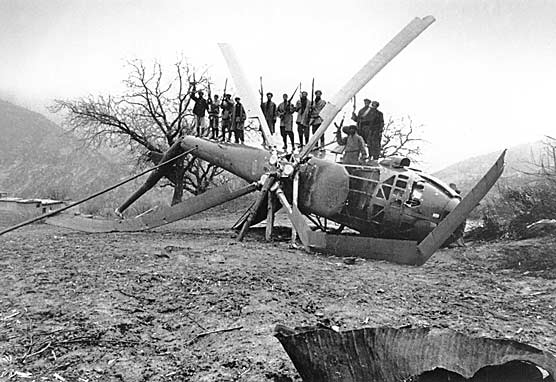* By James A. Lucas Consortium News *
More than three decades ago, there were social movements in Afghanistan to improve the standard of living of its people and to provide greater equality for women. There was even a functioning, if imperfect, democracy.
But the U.S. government – using subversion, weapons and money – contributed to the halt in progress in these areas of human welfare. Indeed, many gains that had been made were reversed.
By 2010, the economic and social status of Afghans had been set back generations; women’s status had deterioriated to such an extent that the prevalence of self-immolation has increased among discouraged women; and there is no real democracy now, with the U.S. making the major decisions as an occupying power.
Now, with President Barack Obama’s recent military buildup, U.S. leaders are on the verge of making the situation even worse.
Afghanistan in the late 1970s was a predominantly poor, rural and moderate Muslim nation. Although treated as second-class citizens, women were allowed to unveil and had the right to vote. From 1933-1978, women were entering the workforce and becoming teachers, nurses and even politicians.
Women worked to end illiteracy and forced marriages. Most of these advances were in Kabul, the most modern and populous city in Afghanistan, although in most rural areas women were still treated as property.
Among broader social-economic reforms, labor unions were legalized, a minimum wage and a progressive income tax were established, and a separation of church and state was adopted.
However, in the 1970s, Afghanistan still had serious economic problems, one of which was the concentration of ownership of most of the land in the hands of tribal and religious leaders (mullahs). Only 3 percent of the rural population owned 75 percent of the land, and there were very high rates of illiteracy.
In the latter part of that decade, progressive and communist groups struggled over how to modernize Afghanistan and resolve these inequities. Their sometimes-zealous efforts to introduce change involved a degree of coercion and violence directed mainly toward those living in areas outside of Kabul, where the vast majority of Afghans lived in mountainous, rural and tribal areas.
Steps to redistribute land were initiated but were met by objections from powerful landed interests.
Read more at Consortium News
ATTENTION READERS
We See The World From All Sides and Want YOU To Be Fully InformedIn fact, intentional disinformation is a disgraceful scourge in media today. So to assuage any possible errant incorrect information posted herein, we strongly encourage you to seek corroboration from other non-VT sources before forming an educated opinion.
About VT - Policies & Disclosures - Comment Policy



